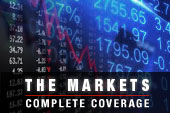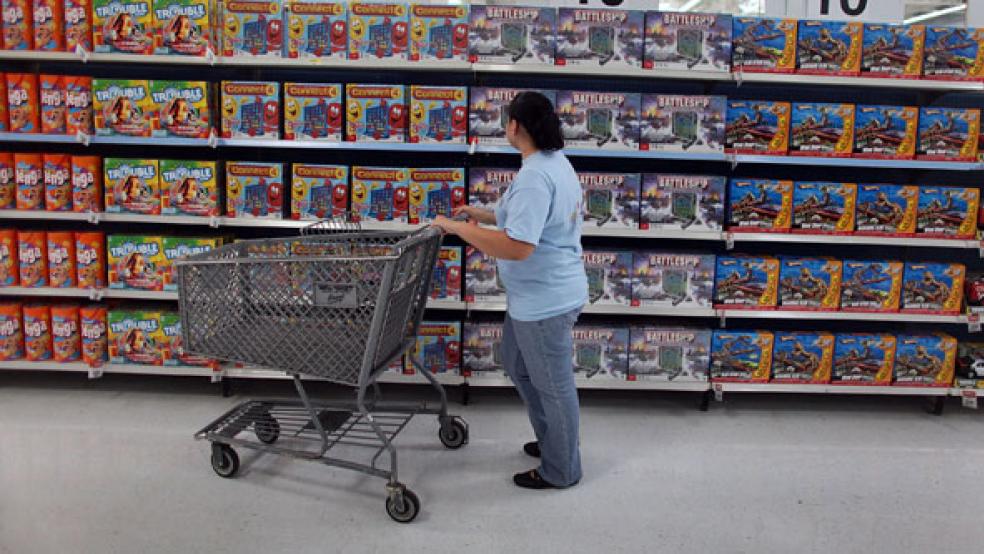The health of the economy – and by logical extension, that of the stock market – depends on the consumer, whose spending makes up about 70 percent of all economic activity in the United States. The problem? Unsettled by the uneven economy, the weak employment market, higher payroll taxes and perhaps the previous uptick in gasoline prices, the consumer may be pulling back.

Sales by retailers and food service providers (think McDonald’s) moved in the wrong direction last month, falling by 0.4 percent to $418.28 billion, according to Commerce Department figures released today.
That’s significantly below the consensus figure made up of the individual forecasts of dozens of economists, who, collectively forecast that sales would be flat over the prior month. In addition to the decline in March, the Commerce Department reported it had revised downward the figures for January (from a gain of 0.3 percent to flat) and February (from a gain of 0.4 percent to an advance of 0.3 percent).
Some of the reasons for this worrying picture may have little to do with consumers’ overall willingness to spend. For instance, the weather in much of the country was colder in March this year than in recent years, and it’s tough to convince shoppers to purchase lightweight t-shirts, capri pants and sandals when they still have to dig their way through the snow to get their cars out of the driveway.
But there are other signs that, absent some kind of catalyst, consumer spending in the coming months will struggle to post the kind of gain recorded in February. For one thing, declines in spending appeared to be steeper when it came to discretionary items. Sales of electronics fell 1.6 percent; department store sales fell 1.1 percent. “This is a bad report,” stated Chris G. Christopher, Jr., director of consumer economics at IHS Global Insight, in an analysis sent to clients. Until now, he had forecast first-quarter growth in real consumer spending of 3.3 percent; he has cut that to 2.8 percent in the wake of this morning’s news.
RELATED: Don't Call It a Consumer Comeback Just Yet
It isn’t just the consumer spending trends that are worrying, but the confidence data that lies behind those headline numbers. The University of Michigan’s April reading for its measure of consumer confidence, also released Friday, tumbled to a nine-month low of 72.3 from 78.6 previously. That’s an ugly figure, given that the stock market has been rallying and, after climbing earlier this year, gasoline prices have declined once more. Both of these trends should have provided some kind of boost to confidence levels.
This all adds to the uncertainty about the economy and, potentially, to the level of volatility in financial markets. As the visibility dims, there is more at stake with each earnings report and each fresh piece of economic data.
That said, this probably isn’t the time to start panicking and dumping all your retail stocks and your holdings in riskier assets. For starters, what will you do instead? So-called low-risk assets – Treasury bonds, gold – are hardly free of risk; they offer different forms of risk, that’s all.
There are also bits of evidence suggesting that March’s gloomy data on consumer spending may prove to be an anomaly. Take Ross Stores (NASDAQ: ROST), a major discount retailer, which reported a 2 percent gain in same-store sales in March (in defiance of analysts’ predictions of a 1.7 percent slump). The chain also revised its earnings outlook higher for the first quarter, suggesting that it expects to see a 5 percent to 6 percent gain in same-store sales for April. Clearly, this isn’t a “one size fits all” kind of market, with all companies moving in lockstep. What both the consumer spending data and the individual same-store sales reports suggest is that while overall growth remains anemic, it also is unevenly divided within the economy.
The consumer sales data may be a reason for concern and unease, but in such a highly variable environment and against the backdrop of reasonably health corporate earnings growth, it may not be a cause for alarm, much less panic.






